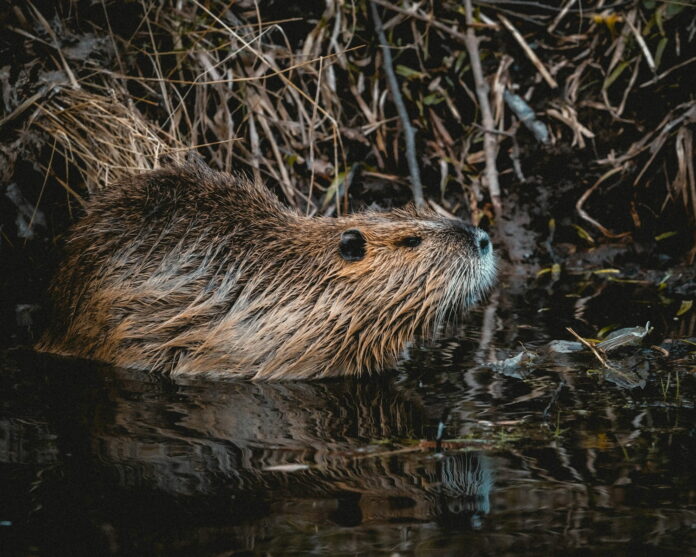Beavers are among the most industrious of nature’s creatures, renowned for their ability to transform landscapes through their remarkable building skills. These semiaquatic rodents are not just fascinating for their engineering prowess but also for the significant ecological impacts of their constructions. From creating complex dams that can change the flow of entire water systems to altering local ecosystems, the actions of beavers are a topic of great interest to ecologists and conservationists.
Beaver Engineering: Nature’s Architects
Beavers are exceptional engineers, capable of altering their environment to suit their needs in ways that few other animals can. These creatures utilize a combination of strong teeth and powerful tails to cut down trees and manipulate materials, creating intricate structures that serve as their homes and protect them from predators. The architecture of a beaver dam is no random stack of logs and mud; it is a carefully constructed barrier that can withstand the pressures of water while allowing a controlled flow through it. The complexity of these structures is not just a marvel of natural engineering; it’s also an insight into the cognitive abilities of these animals, as they adapt and respond to the challenges posed by their environment.
The construction skills of beavers extend beyond dams. They also build canals to transport building materials and food, and lodges – their dome-shaped homes – which are strategically placed for safety and convenience. The impressive aspect of beaver engineering lies in their ability to maintain these structures, constantly repairing and modifying them to adapt to changing water levels and seasonal variations. This ongoing maintenance ensures the longevity of their habitats and showcases a level of foresight and planning that is quite remarkable for a non-human species.
The engineering feats of beavers do not occur in isolation. They have a profound influence on the surrounding ecosystem, often creating new wetlands that are rich in biodiversity. These wetlands provide habitat for a myriad of species, from fish and amphibians to birds and insects. The ability of beavers to create such habitats demonstrates how one species’ behavior can have cascading effects on the broader environment, making them ecosystem engineers par excellence.
The Impact of Dams on Local Ecosystems
The construction of beaver dams has a transformative effect on local ecosystems. By damming streams and rivers, beavers create ponds and wetlands that can greatly alter the landscape. These aquatic ecosystems serve as crucial habitats for a variety of species, increase biodiversity, and provide benefits such as water purification and flood mitigation. The standing water behind a beaver dam can also help recharge groundwater supplies, contributing to the overall health of the watershed.
However, the impact of beaver dams is not universally positive. In some cases, these structures can flood roads, agricultural lands, and other human developments, leading to conflicts between beavers and local communities. Additionally, the sudden change in water flow and habitat can negatively affect certain species that prefer fast-flowing streams, leading to a shift in the local ecological balance. The altered hydrology may also affect fish migration and spawning, causing concern for fisheries and the long-term health of aquatic populations.
It is worth noting that beavers are often reintroduced to areas as a part of riparian restoration efforts due to their ability to improve ecosystem functions. Their dam-building activities can help restore degraded streams, combat erosion, and support the recovery of plant and animal communities. This dual nature of beaver dams – it’s capacity for both constructive and disruptive change – highlights the need for a nuanced understanding of their ecological role and careful management of their populations.
Balancing Beaver Activity with Conservation
To balance the ecological effects of beaver activity with conservation goals, wildlife managers and scientists often engage in active management of beaver populations and their habitats. This includes strategies such as installing flow devices that prevent flooding while allowing beavers to continue their natural behaviors. Such non-lethal management techniques are increasingly favored over the relocation or culling of beavers, as they enable humans and beavers to coexist more harmoniously.
In regions where beavers are considered a keystone species, their presence is crucial for maintaining the health and diversity of the ecosystem. In these cases, conservation efforts may focus on protecting beaver populations and their habitats, ensuring that their ecological contributions are preserved. However, this can be a complex task, requiring the monitoring of beaver populations, the assessment of habitat suitability, and sometimes, the mitigation of human-beaver conflicts through community engagement and education.
The challenge of balancing beaver activity with conservation is a dynamic one, as it often involves adapting to the changing needs of both wildlife and human communities. It is a process of continual learning and adjustment, with the ultimate goal of fostering ecosystems where beavers and a multitude of other species can thrive. As our understanding of ecological systems deepens, so too does our appreciation for the intricate role that beavers play in shaping the natural world and the importance of managing their activities in a sustainable and thoughtful manner.
Beavers, as master builders of the natural world, have a profound impact on the ecosystems they inhabit. Their engineering skills can lead to the creation of thriving wetlands, enhanced biodiversity, and improved ecological functions. Yet, their activities can also challenge existing land uses and ecological balances. Balancing the ecological effects of beaver activity with conservation efforts requires a nuanced approach that considers the needs of both the environment and human interests. By implementing innovative management strategies and fostering a deeper understanding of these remarkable creatures, we can work towards a future where beavers continue to shape our landscapes in harmony with the broader goals of environmental stewardship and sustainability.
